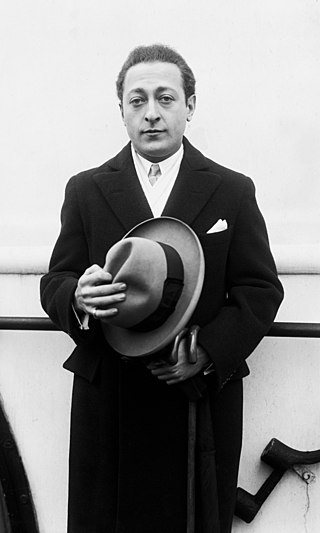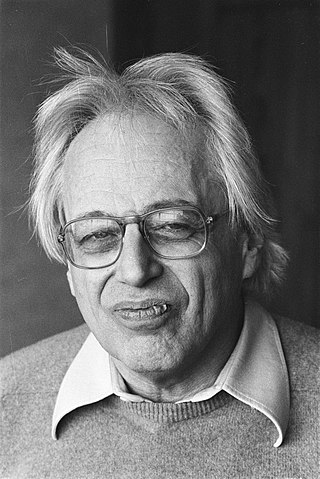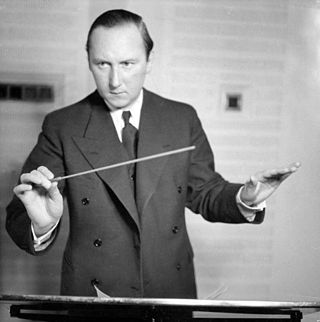
The Violin Concerto in D major, Op. 61, was written by Ludwig van Beethoven in 1806. Its first performance by Franz Clement was unsuccessful and for some decades the work languished in obscurity, until revived in 1844 by the then 12-year-old violinist Joseph Joachim with the orchestra of the London Philharmonic Society conducted by Felix Mendelssohn. Joachim would later claim it to be the "greatest" German violin concerto. Since then it has become one of the best-known and regularly performed violin concertos.
The Violin Concerto by Arnold Schoenberg dates from Schoenberg's time in the United States, where he had moved in 1933 to escape Nazi Germany. The piece was written in 1936, the same year as the String Quartet No. 4. At the time of its completion, Schoenberg was living in Brentwood, Los Angeles, and had just accepted a teaching position at the University of California, Los Angeles. The work is dedicated to Anton Webern.

The Violin Concerto in D minor, Op. 47 of Jean Sibelius, originally composed in 1904 and revised in 1905, is the only concerto by Sibelius. It is symphonic in scope and included an extended cadenza for the soloist that takes on the role of the development section in the first movement.
The Cello Concerto No. 1 in E-flat major, Op. 107, was composed in 1959 by Dmitri Shostakovich. Shostakovich wrote the work for his friend Mstislav Rostropovich, who committed it to memory in four days. He premiered it on October 4, 1959, at the Large Hall of the Leningrad Conservatory with the Leningrad Philharmonic Orchestra conducted by Yevgeny Mravinsky. The first recording was made in two days following the premiere by Rostropovich and the Moscow Philharmonic Orchestra conducted by Aleksandr Gauk.
The Violin Concerto No. 1 in A minor, Op. 77, was originally composed by Dmitri Shostakovich in 1947–48. He was still working on the piece at the time of the Zhdanov Doctrine, and it could not be performed in the period following the composer's denunciation. In the time between the work's initial completion and the first performance, the composer, sometimes with the collaboration of its dedicatee, David Oistrakh, worked on several revisions. The concerto was finally premiered by the Leningrad Philharmonic under Yevgeny Mravinsky on 29 October 1955. It was well-received, Oistrakh remarking on the "depth of its artistic content" and describing the violin part as a "pithy 'Shakespearian' role."

Felix Mendelssohn's Violin Concerto in E minor, Op. 64, MWV O 14, is his last concerto. Well received at its premiere, it has remained among the most prominent and highly-regarded violin concertos. It holds a central place in the violin repertoire and has developed a reputation as an essential concerto for all aspiring concert violinists to master, and usually one of the first Romantic era concertos they learn. A typical performance lasts just under half an hour.

The Violin Concerto by William Walton was written in 1938–39 and dedicated to Jascha Heifetz, who commissioned the work and performed it at its premiere on 7 December 1939 with the Cleveland Orchestra conducted by Artur Rodziński. The British premiere, delayed by the Second World War, was given on 1 November 1941, with Henry Holst as soloist and the composer conducting. Walton later reorchestrated the concerto; the revised version was premiered in 1944. The work has been frequently recorded and has established itself as one of the composer's most durable compositions.
Sergei Prokofiev began his Violin Concerto No. 1 in D major, Op. 19, as a concertino in 1915 but soon abandoned it to work on his opera The Gambler. He returned to the concerto in the summer of 1917. It was premiered on October 18, 1923 at the Paris Opera with Marcel Darrieux playing the violin part and the Paris Opera Orchestra conducted by Serge Koussevitzky. Igor Stravinsky made his debut as conductor at the same concert, conducting the first performance of his own Octet for Wind Instruments.
Sergei Prokofiev set to work on his Piano Concerto No. 2 in G minor, Op. 16, in 1912 and completed it the next year. However, that version of the concerto is lost; the score was destroyed in a fire following the Russian Revolution. Prokofiev reconstructed the work in 1923, two years after finishing his Piano Concerto No. 3, and declared it to be "so completely rewritten that it might almost be considered [Piano Concerto] No. 4." Indeed, its orchestration has features that clearly postdate the 1921 concerto. Performing as soloist, Prokofiev premiered this "No. 2" in Paris on 8 May 1924 with Serge Koussevitzky conducting. It is dedicated to the memory of Maximilian Schmidthof, a friend of Prokofiev's at the Saint Petersburg Conservatory, who had committed suicide in April 1913 after having written a farewell letter to Prokofiev.
The Viola Concerto by William Walton was written in 1929 and first performed at the Queen's Hall, London on 3 October of that year by Paul Hindemith as soloist and the composer conducting. It had been written with the violist Lionel Tertis in mind, and he took the work up after initially rejecting it. The concerto established Walton as a substantial figure in British music and has been recorded by leading violists internationally. Walton revised the instrumentation of the concerto in 1961, lightening the orchestral textures.
Polish composer Witold Lutosławski's Concerto for Orchestra was written in the years 1950–54, on the initiative of the artistic director of the Warsaw Philharmonic, Witold Rowicki, to whom it is dedicated. It is written in three movements, lasts about 30 minutes, and constitutes the last stage and a crowning achievement of the folkloristic style in Lutosławski's work. That style, inspired by the music of the Kurpie region, went back in time to the pre-1939 years. Having written a series of small folkloristic pieces for various instruments and their combinations, Lutosławski decided to use his experience of stylisation of Polish folklore in a bigger work. However, the Concerto for Orchestra differs from Lutosławski's earlier folkloristic pieces not only in that it is more extended, but also in that what is retained from folklore is only melodic themes. The composer moulds them into a different reality, lending them new harmony, adding atonal counterpoints, and turning them into neo-baroque forms.

The Concerto for Violin and Orchestra by György Ligeti is a violin concerto written for and dedicated to the violinist Saschko Gawriloff. A performance of the work lasts about 28 minutes.
The Concerto Fantasy for Two Timpanists and Orchestra is a double timpani concerto written by Philip Glass in 2000. It is paired with the Cello Concerto on Vol. I of Glass' Concerto Project, a set of eight concerti by the composer. A typical performance of the work lasts 25–28 minutes. It was written for Jonathan Haas and later recorded by Evelyn Glennie, and was premiered by Haas and Svet Stoyanov with the American Symphony Orchestra in Avery Fisher Hall, Lincoln Center, conducted by Leon Botstein. The work was commissioned jointly by the American Symphony Orchestra, the Peabody Symphony, the Milwaukee Symphony, the St. Louis Symphony and the Phoenix Symphony. In 2004, a transcription for wind ensemble was written by Mark Lortz, which debuted at Peabody Institute in 2005.
Benjamin Britten's Piano Concerto, Op. 13, is the composer's sole piano concerto.
The Violin Concerto is a concerto for violin and orchestra in two movements by the American composer Christopher Rouse. The work was commissioned for violinist Cho-Liang Lin by the Aspen Music Festival and School and funded in part by a grant from the National Endowment for the Arts. It was completed August 18, 1991 and is dedicated to Cho-Liang Lin.
The Concerto for Clarinet and Orchestra is a clarinet concerto in three movements by the American composer John Corigliano. The work was commissioned by the New York Philharmonic for the clarinetist Stanley Drucker. It was composed in the summer and fall of 1977 and was first performed in New York City on December 6, 1977, by Drucker and the New York Philharmonic conducted by Leonard Bernstein. The composition is dedicated to Drucker and Bernstein.

The Concerto no. 4 for Violin and Orchestra is a violin concerto by Soviet and German composer Alfred Schnittke. It was commissioned by the 34th Berlin Festival and written in 1984. Its first performance was given in Berlin on 11 September 1984 with dedicatee Gidon Kremer as soloist and the Berlin Philharmonic Orchestra conducted by Christoph von Dohnányi.
The Concerto for Violin and Orchestra "Eleven Eleven" is the first violin concerto written by American composer Danny Elfman. Co-commissioned by the Czech National Symphony Orchestra, Stanford Live at Stanford University, and the Royal Scottish National Orchestra, the piece premiered at Smetana Hall in Prague, on June 21, 2017, with Sandy Cameron on violin and John Mauceri conducting the Czech National Symphony Orchestra. In 2019, the premiere recording of the concerto featured Cameron with Mauceri conducting the Royal Scottish National Orchestra.

The Violin Concerto, Op. 54, is a three-movement concertante composition for violin and orchestra written in 1952 by the Swedish composer Lars-Erik Larsson. The piece premiered over Swedish Radio on 11 January 1953 in Stockholm, Sweden, with Sten Frykberg conducting the Swedish Radio Orchestra. The soloist was the Hungarian violinist André Gertler, its dedicatee.






